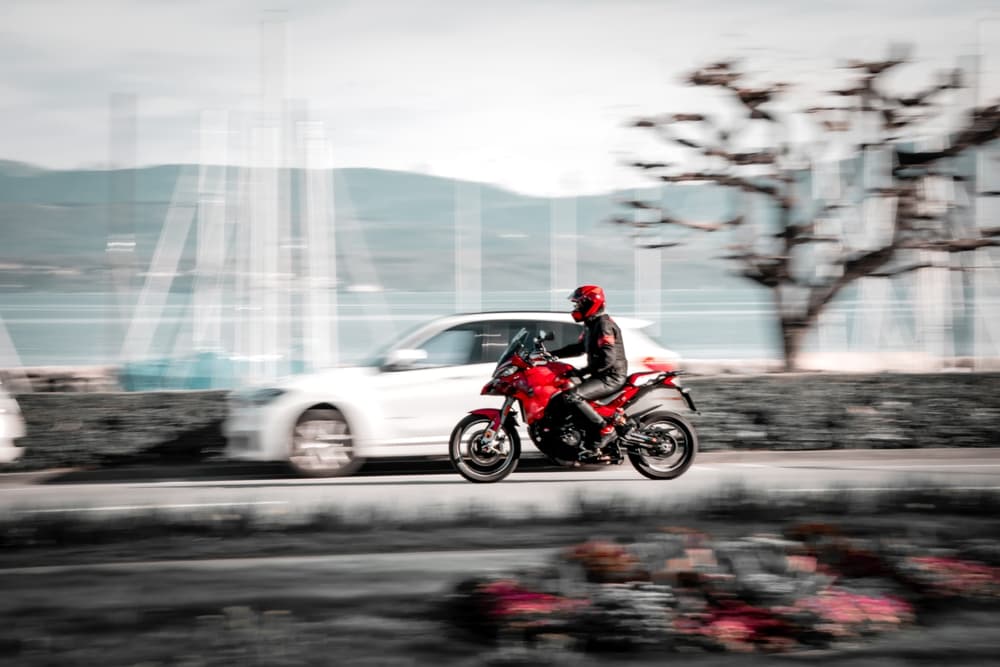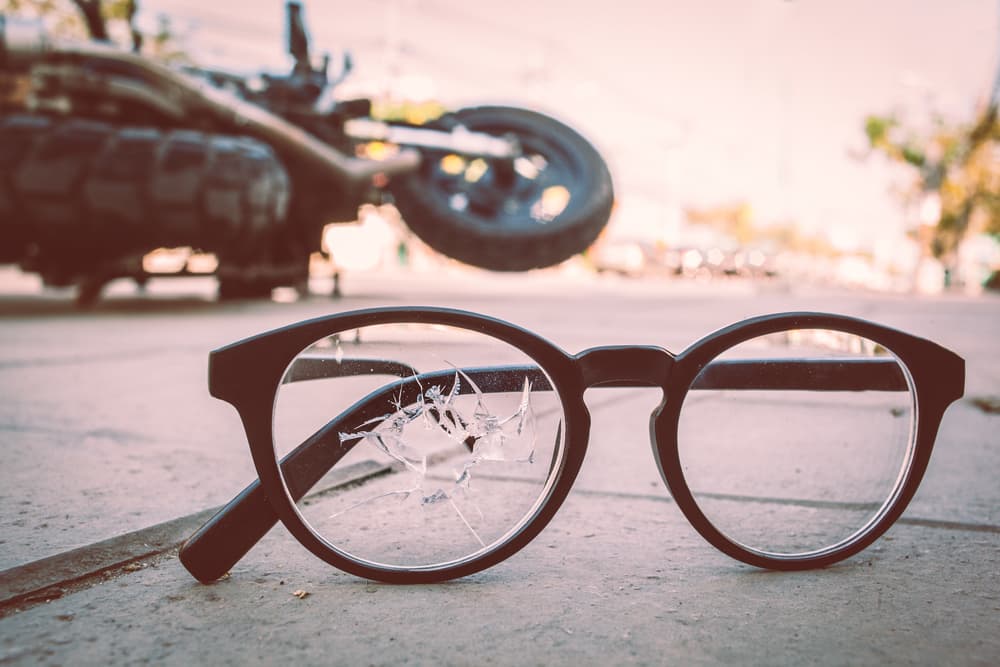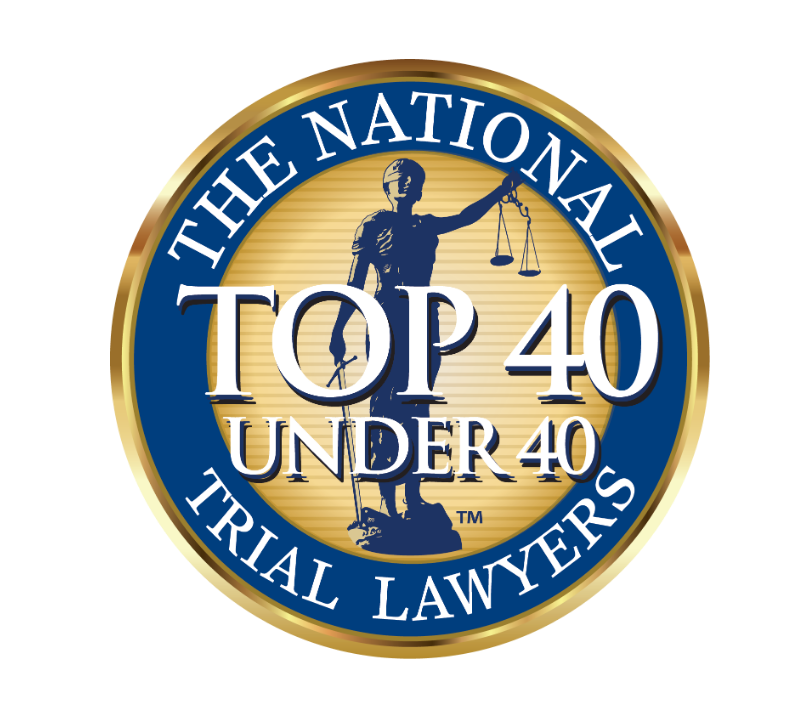We often hear drive safely from moms, dads, wives, husbands, sisters, brothers, grandparents, aunts, uncles, and friends. The road may take us on a dangerous journey, and those who love us know that accidents happen every day when they say this to us.
On the road, every person is someone's relative, friend, or loved one. What happens when drivers lose focus on safety and awareness?
If you or a loved one has been injured in a motorcycle wreck, consult a knowledgeable motorcycle accident lawyer near you.
Schedule a Free Initial Consultation Today!
Increased Awareness Can Save Lives

Motorcycle accidents have a higher risk of injury based on the size of the bikes compared to other vehicles on the road and the rider's exposure. With motorcycles taking to the roads in every season, rain or shine, it becomes essential for drivers to look for all types of vehicles on the road.
Inattentive drivers find motorcycles more difficult to spot and judge their speed than other vehicles. According to the National Safety Council (NSC), over half of motorcycle accidents involve other vehicles.
Each motorist will want to practice safe driving so that everyone on the road arrives safely to their destination. Awareness helps drivers to avoid contributing to accident statistics. It can help drivers know how to safely pass vehicles, including motorcycles, and avoid causing another's injury or death.
Georgia Motorcycle Statistics
On the way to your destination, you may have noticed an influx of motorcycles on the road. Georgia and the United States as a whole have seen an increase in motorcycle sales, according to Forbes' “Motorcycle Sales, Deaths and Questions.”
An influx in motorcycle accident injuries and deaths rises along with sales. Staggeringly, motorcyclists have a 22 times greater fatality risk than a fellow driver in a car or truck.
According to Georgia’s Department of Motor Services in 2019, 3,948 motorcycle crashes occurred within Georgia’s borders, and a total of 4,269 motorcyclists (drivers and passengers) were involved in accidents.
The Atlanta region accounted for more motorcycle crashes and injuries than surrounding rural regions. Motorcyclist fatalities had higher numbers with more serious injuries in the metropolitan areas.
According to the Georgia Highway Safety Motorcycle Driver’s Fact Sheet published by the Governor’s Office of Highway Safety, motorcycle accidents resulted in $252 million in Georgia hospital emergency room bills. Motorcycle injuries and fatalities are steadily rising. Don’t become a part of the statistic or a reason for the statistic.
How Do You Safely Pass a Motorcycle?
There are many ways to practice safe driving with motorcycles in mind. Practice the following suggestions every time you operate a vehicle.
Avoid distracted driving. Most accidents happen because of distracted driving. This includes chatting on the phone, texting, picking a song, starting a map app, scrolling, etc. Plan to leave five minutes earlier than usual to allow yourself more time to settle in the vehicle.
Set the GPS and finish your text, and then, turn your phone to “Do Not Disturb” or “Away” to prevent distractions. Complete administrative driving tasks before you begin driving, not during your drive.
By avoiding distractions while driving, a driver is less likely to be in an accident or be the cause of an accident. Awareness of yourself and your surroundings is crucial to keeping yourself, your passengers, and others on the road safe.
Determine if you have adequate visibility. Wait to pass if you have difficulty seeing the road ahead due to weather or other factors. Determine there is no oncoming traffic. Don't pass until you can see the road, other motorists, and what is happening ahead of you.
Look twice when checking mirrors and blind spots. Motorcycles are smaller than cars and trucks, so they are more difficult to see, especially in blind spots and at dawn and dusk when accidents are more likely to happen.
A safe practice is to check all mirrors and blind spots twice. Don’t rely on a quick peek to determine if you can pass safely. If a motorcycle is there, you could kill them.
Keep your distance and know exactly where the motorcycle is.
Use turn signals. Whether turning left or right, merging, or passing, always use your turn signals. Try to give at least three seconds of warning before passing. These signals alert other drivers of your intentions so they can drive accordingly based on their destinations. Don’t forget to turn off your signal when you finish passing to avoid confusing other drivers.
Pass on the left. As a general rule, passing safely means always passing on the left side of the road. Put on your signal if you are switching lanes to pass. Using signals and passing only on the left safely will help prevent accidents.
On highways that have more than two lanes of traffic, safely pass one lane at a time. Vehicles that dangerously pass by crossing multiple traffic lanes are especially dangerous to motorcycle riders.
Pass at an appropriate speed – speed limit or below the speed limit. This safety tip often goes ignored by the lead-footed amateur race car drivers of the highway, but to keep others safe, save your speeding for the track or leave it to the professionals.
Pass at the rate of the speed limit or the rate of traffic without changing the flow of traffic to do so. Avoid holding up traffic or cutting off drivers causing additional danger on the road.
Do not accelerate to pass. Speeding up or slowing down will change the traffic flow, so stay the course, and safely pass at a steady speed.
Never pass on a double yellow line or when the continuous line is located on your side of the road. Follow basic road laws and signs. If it says no passing, there is a reason.
Avoid splitting up groups of bikers. Bikers often ride in groups for poker runs, organized bike rallies, clubs, and friends together on a weekend ride. Avoid splitting these groups up when you are driving.
The Motorcycle Safety Foundation outlines important group riding guidelines and stresses staying in formation “allows a proper space cushion between motorcycles so that each rider has enough time and space to maneuver and to react to hazards.” Don’t mess with their formation.
The Motorcycle Safety Foundation suggests motorcycle drivers avoid side-by-side formations.
Instead, it claims a safer riding formation setup: “The leader rides in the left third of the lane, while the next rider stays at least one second behind in the right third of the lane; the rest of the group follows the same pattern. A single-file formation with a minimum two-second following distance is preferred on a curvy road, under conditions of poor visibility or poor road surfaces, entering/leaving highways, or other situations where an increased space cushion or maneuvering room is needed.”
Only pass in a clear lane: A head-on collision with a motorcycle would be a devastating tragedy for all involved. Make sure you are clear to pass by looking ahead for road obstructions or obstacles in your view such as construction zones or upcoming curves, that may hinder a safe pass.
Don’t try to race the motorcyclist if you see one coming towards you. It’s harder to judge the bikes' speed because of their smaller size.
Don't drive in the same lane: Don't try to drive in the same lane or pull into the same lane as a motorcycle when passing. Motorcycles need the entire lane to safely navigate the road just like any other vehicle.
Don’t tailgate: Slow down. There is no point in riding someone’s bumper when it could cause an accident. Exercise patience when driving behind a slower driver, especially a motorcycle.
Slow down in construction zones and avoid passing: Construction zones are dangerous if drivers do not practice proper safe driving skills. However, drivers who do not pay attention to road conditions and posted signs, workers, and equipment endanger motorcycles in construction zones. Motorcycles drive differently to safely traverse loose gravel and other hazards in a construction zone.
Give motorcycles space and time and to judge and react to their environment: It might not be the best time to pass. A motorcyclist is trained to get ahead of traffic, avoid potholes and other road hazards, and take longer to stop in the rain due to the smaller surface area of motorcycle tires.
What you consider reckless driving, slower driving, or even swerving may save the motorcyclist’s life. Give them space if you aren’t sure why a motorcyclist is driving a certain way. They may see something that endangers their safety in a way that does not affect you.
If a motorcyclist pulls over on the shoulder or side of the road, give them space. Allow a wide berth when possible between your vehicles and their vehicle while staying in your lane.
Move Over: In situations when a motorcyclist or other driver is pulled over with emergency lights on, the Georgia Move Over Law “requires drivers to move over one lane when possible if an emergency vehicle with flashing lights is parked on the shoulder of the highway. And if traffic is too heavy to move over safely, the law requires drivers to slow down below the posted speed limit instead AND to be prepared to stop.”
Night driving: Night driving offers its own set of treacherous hazards. Motorcycle lights can disorient some night drivers as there is only (usually) a solitary headlight and much smaller tail lights and blinkers. When driving at night, practice hyperawareness to proceed cautiously, keeping everyone safe at night.
Expect the Unexpected: Never let your guard down. When driving, something can happen in a split second, so keep your wits about you and expect the unexpected right around the next corner.
By anticipating possible challenges in driving, we are planning how to handle these incidents long before or if they happen.
Refrain from Passing in Bad Weather: Rain, wind, and other bad weather such as ice, or winter driving can make operating a motorcycle more difficult for its rider. To avoid creating a hazardous situation for the bikers in an already difficult driving situation, wait to pass until the weather turns.
Stay Calm and Practice Patience: No matter what road conditions, a safe practice is to stay calm and practice patience with all other drivers on the road. Practice box breathing when your blood pressure rises or you become nervous due to passing a motorcycle.
Count to four by inhaling for four seconds through your nose, holding your breath for four seconds, exhaling for four seconds out of your mouth, and then holding your breath for four seconds before repeating the process as many times as necessary until you feel your body return to a calm state.
This technique can calm your body down in situations of duress or anxiety.
If you aren’t calm, the results can be life-threatening.
Common injuries in motorcycle accidents
While the list below isn’t comprehensive, some of the common injuries resulting from motorcycle accidents include more severe injuries within these categories due to the nature of motorcycle accidents.

Skin rash: More commonly known as road rash, skin abrasions caused by a person’s skin skidding or sliding on the road are at high risk for infection. A doctor must treat skin rashes.
Soft tissue injuries: An accident can cause bruising, swelling, and general pain.
Arm or shoulder injuries: Often during an accident, motorcyclists extend their arms to protect their bodies during an accident. Shoulder injuries like rotator cuff tears, nerve damage, shoulder dislocation, and shoulder bone fractures such as broken clavicles can result.
Fractures and broken bones: These injuries take time to recover from and often involve casting, surgery, rehabilitation, or physical therapy. Time off from work to heal is often necessary.
Traumatic brain injuries: Traumatic brain injuries include when the skull is shaken or hit. Additionally, trauma can include foreign bodies entering the brain. Some injuries are treatable but others lead to permanent disabilities and even death.
Spinal cord injuries: Spinal cord injuries involve any part of the spinal cord and the nerves at the end of the spinal cord. Spinal cord injuries can have other lasting complications in the form of mental, social, and emotional side effects.
Neck injuries: Whiplash, neck sprains, or broken necks can force survivors of these accidents to take time off work, go to physical therapy, undergo surgery, or even live with paralysis or lasting disabilities due to the injury.
Amputations or disfigurement: Whether losing an appendage or living with a new version of yourself, these injuries can have lasting effects on the psyche and the body.
Burns: Fire or superheated metals can cause burn injuries that may require grafting or intensive care to prevent infection.
Internal injuries or bleeding: With any blunt force trauma, internal injuries are a concern as it’s not a visible injury. More difficult to detect at the initial accident scene, medical professionals should test for internal injuries, bleeding, and trauma at the emergency room visit.
Post-Traumatic Stress Disorder: A traumatic accident may cause psychological shock or emotional distress due to the shock of the danger or terror of the event. This can manifest differently within individuals and speaking with a professional dealing with PTSD is advised.
Death, sometimes categorized as wrongful death depending on the accident, offers its own set of tragic consequences for all involved in the accident, victims, drivers, passengers, and witnesses.
1. What is the safest way to pass a motorcycle?
The safest way to pass a motorcycle is to always use the left lane, maintain a steady speed within the posted speed limit, and ensure adequate visibility. Avoid distracted driving and check blind spots carefully.
2. Can I pass a motorcycle in the same lane?
No, it’s unsafe to pass motorcycle riders in the same lane. They require the entire lane to maneuver safely, especially on winding or curvy roads.
3. When is it unsafe to pass a motorcycle?
Avoid passing motorcycles when there is oncoming traffic, poor visibility due to bad weather, a solid double yellow line, or on a narrow two-lane road. Always ensure ample space and clear road ahead before passing.
4. Should I adjust my speed when passing a motorcycle?
Yes, pass at a steady speed, maintaining the flow of traffic without exceeding the maximum speed limit. Passing too quickly or too slowly can create dangerous situations.
5. Can I pass a group of motorcycle riders?
If you encounter a group of motorcycles, wait until it's safe to pass the entire group rather than weaving between individual riders. Ensure there is enough space for the passing maneuver.
6. What precautions should I take on multiple traffic lanes?
When passing on multiple lane roads, stay in the passing lane, use turn signals, and avoid switching lanes abruptly. Watch for other passenger vehicles and cross-traffic lanes, and keep an eye on brake lights ahead.
7. What should I do if there’s reduced visibility or bad weather?
Avoid passing motorcycles in conditions where visibility drops considerably, such as during rain, fog, or at night. These conditions increase the risk of motorcycle accidents.
8. What can happen if I pass recklessly?
Reckless passing can result in a motorcycle accident, causing serious injuries. In these cases, the personal injury claims process may become complicated with the involvement of an insurance company.
9. What should I do after a motorcycle accident?
If you're involved in a motorcycle accident, seek legal assistance to ensure fair compensation. Many law firms offer a free consultation to help you understand your rights and options.
What do you do if you were in a motorcycle accident and suffered an injury in Atlanta?
Contact Atlanta Personal Injury Law Group at (833) 285-9467 for a free consultation about your motorcycle accident or injury. Our personal injury lawyers have experience in motorcycle accidents and can help you or your loved one get fair compensation to cover your injury and losses to help you recover from your motorcycle accident. Don’t wait.




























